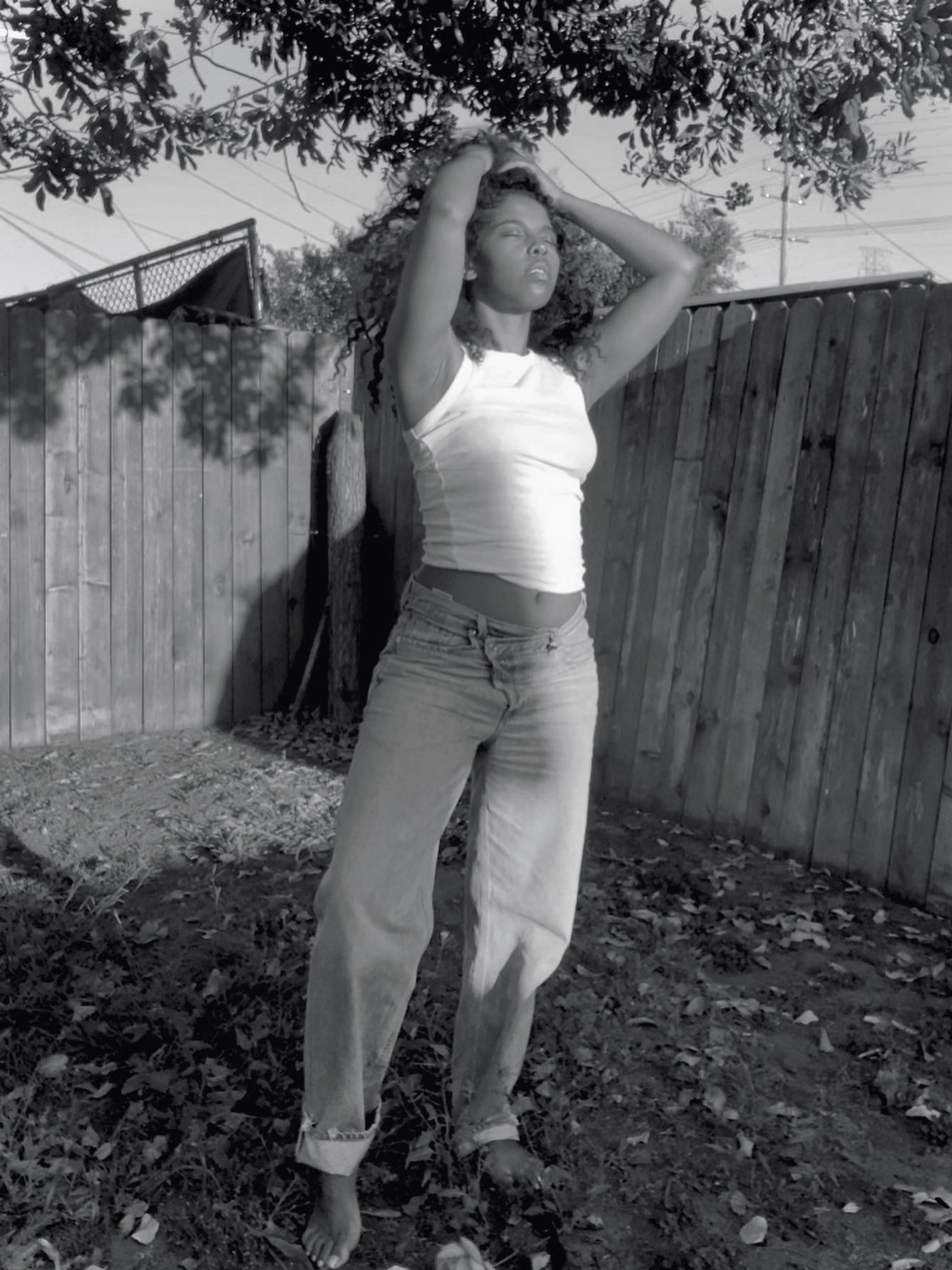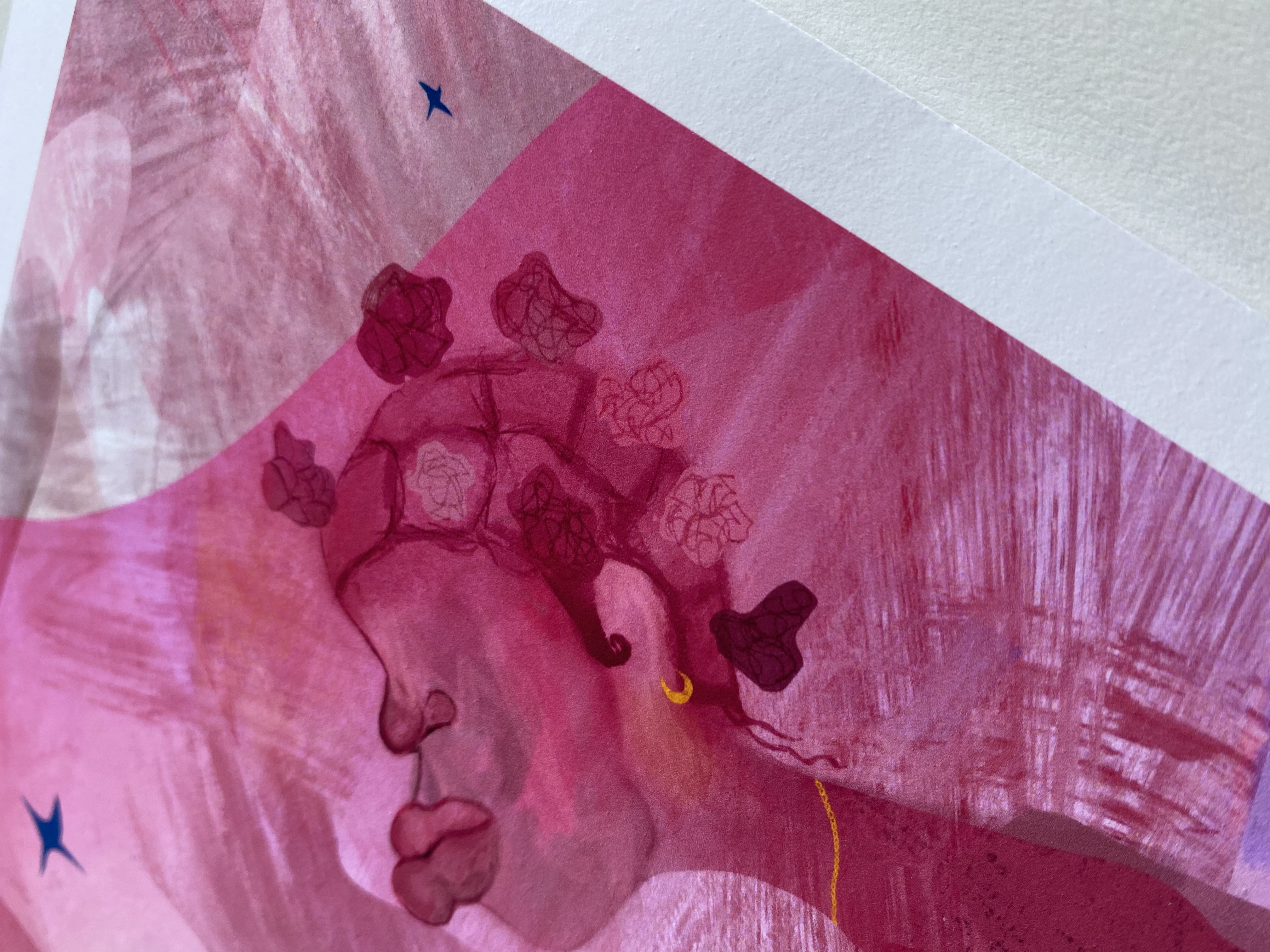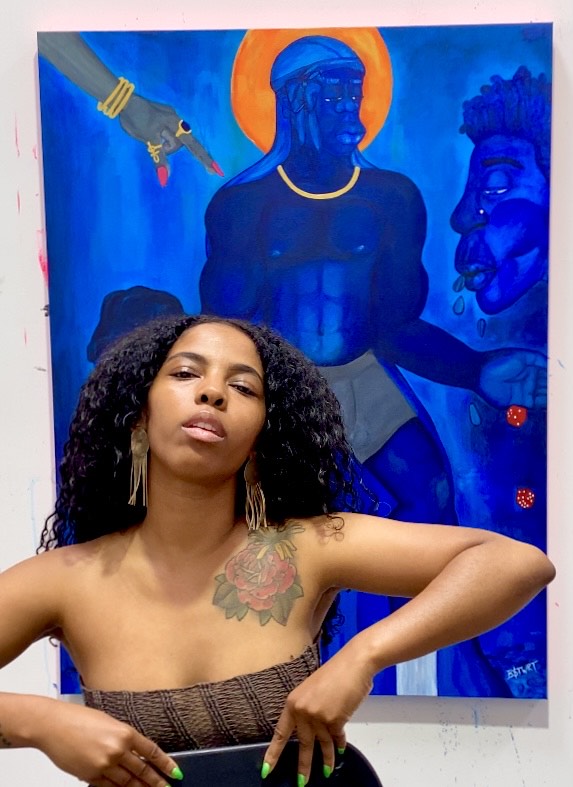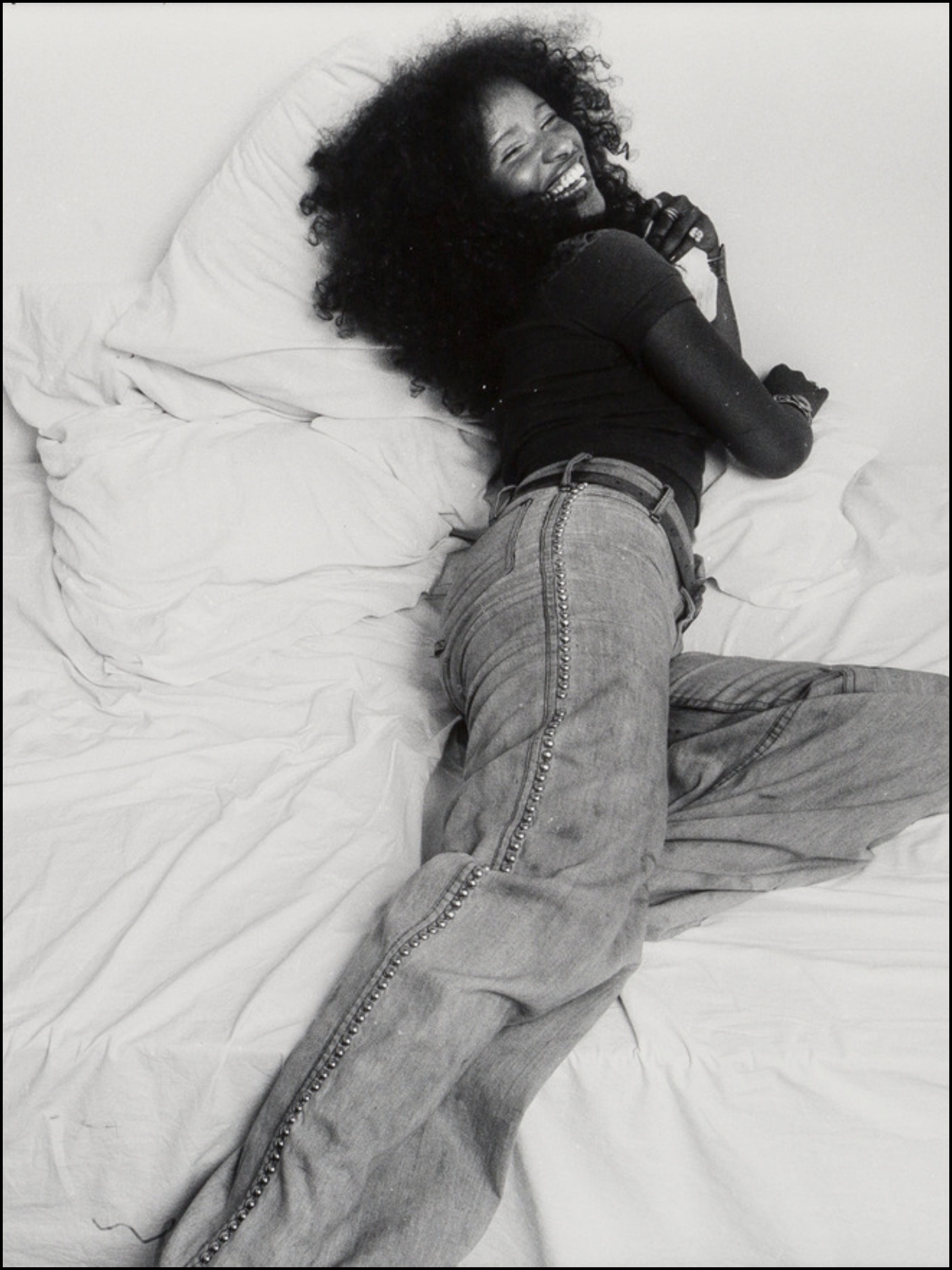art
In conversation with multidisciplinary artist B. Stewart
B. Stewart talks to Trutuyou about the origins of her love for art, exploring the black experience, and the impact community has on her life.
By Daija Green | Posted on September 20, 2022


Self-Portraits in Eastside South Central/Watts, CA
V
ibrant canvases of deep blues and pink hues make up the masterpieces that are B. Stewart’s artwork. Born and raised in California, the multidisciplinary artist creates enlightening and emotive realms, exploring blackness in its profound essence. She describes her work as transcending, available and true, and aims to interpret the varying experiences of people of the African diaspora and ADOS culture.
ADOS, American Descendants of Slavery, is a term and movement that refers to the descendants of enslaved africans in the United States and demands reparations for the system of slavery. Artistically, the movement offers cultural enlightenment, empowerment and community through visual storytelling. B. creates with intentionality making each one of her creations a cultural heirloom, ensuring that black stories live on for generations. Earlier this year, Trutuyou spoke with B. about the origins of her love for art, exploring the black experince in its essence and the impact community has on her life.
ADOS, American Descendants of Slavery, is a term and movement that refers to the descendants of enslaved africans in the United States and demands reparations for the system of slavery. Artistically, the movement offers cultural enlightenment, empowerment and community through visual storytelling. B. creates with intentionality making each one of her creations a cultural heirloom, ensuring that black stories live on for generations. Earlier this year, Trutuyou spoke with B. about the origins of her love for art, exploring the black experince in its essence and the impact community has on her life.
 Up-close image of recently released archival fine art print
Up-close image of recently released archival fine art print"I am a daughter, a sister, a cousin, a friend, a neighbor. All those things come first for me. It's really community that centers me. I'm literally the neighbor that drops something off at your house." Shares B. as we both introduce ourselves over the phone. She possesses a down-to-earth energy and a spirit that seems like she's been here before. It could be her ancestral spiritual practice or the fact that she's existed in multiple spaces; from wealth to poverty, the ghetto to corporate - her experiences manifest through the wisdom she carries throughout her journey.
B. shares that she began her career in corporate after attending a PWI for film, "While I was in school, I realized that it wasn't fulfilling me in the way that I needed education. It catered to eurocentric men, and as a black woman, it was very confusing to me." She ended her college journey, immersing herself in marketing and production, and taking on a social media position for Nordstrom. As much as she admits that she was addicted to the hustle, she also candidly discloses that this path was not what she wanted, "Around 2017/2018, I realized that I didn't want to build another white man's legacy."
B. shares that she began her career in corporate after attending a PWI for film, "While I was in school, I realized that it wasn't fulfilling me in the way that I needed education. It catered to eurocentric men, and as a black woman, it was very confusing to me." She ended her college journey, immersing herself in marketing and production, and taking on a social media position for Nordstrom. As much as she admits that she was addicted to the hustle, she also candidly discloses that this path was not what she wanted, "Around 2017/2018, I realized that I didn't want to build another white man's legacy."
Trutuyou: When did your artistic journey begin?
B. Stewart:
I have two siblings. My older sister and little brother are both artists as well. I'm the middle child, so in my mind, I always felt like I wasn't an artist. I felt like I was supposed to be the one that advocated for them. And then there was just a point in my life where I decided to pick up a paintbrush and realized, wow, I'm an artist too.Trutuyou: What drew you to art?
B. Stewart :
I knew that I had an eye and a vision. In 2016-2017, I was like, "I'm already using these skills for work; let me see what I can do for myself." I really got into researching art history and learning about art galleries. At that time, they didn't have a lot of representation of ADOS culture specifically. ADOS is the American Descendants Of Slavery period - it is people who are connected to American enslavement. We are so marginalized, and so much of our culture is taken from us and put into mainstream media to where everyone has a piece of it, and we don't really get to hold on to our heritage. It's getting better, and we are seeing changes, but in the past, when you walked into museums, you would see sections for European art, and Asian art, but there was rarely anything that showed blackness in its profound essence. So that's basically what drew me to be like, I need to see us in museums. I need to see us in galleries. We are starting to see more black-led galleries, and it's like a renaissance. We had the Harlem renaissance during the Jazz age, and now we are in the internet age. This is our renaissance. So now we see all this fine art from black people of the African diaspora, and I want to be a part of that.

B. in studio Los Angeles, California
Trutuyou: What stories and ideas does your art explore?
B. Stewart:
I focus on people of the African diaspora and how we experience life. I'm personally a spiritual person. I feel like I am guided intergenerationally by my ancestors. This molds a peace and softness in the discomfort because the way that America and the world exists, there seems to always be a threat. But if you can just tune into yourself and trust in your purpose even when you feel you don't know - that's what I'm really trying to explore—and just demystifying a lot about our experiences and what it means to be in the ghetto. I'm a fourth-generation resident of California. My family migrated here during the great migration, and I've existed in a lot of spaces. I've existed in extreme wealth, but I've also existed in extreme poverty. There's this idea of the ghetto being bad and not being wholesome. And it's sometimes used as a derogatory term, and it's like in reality, the ghetto/the hood - where our grandmas are - it informs culture, it informs the essence of America and beyond.


